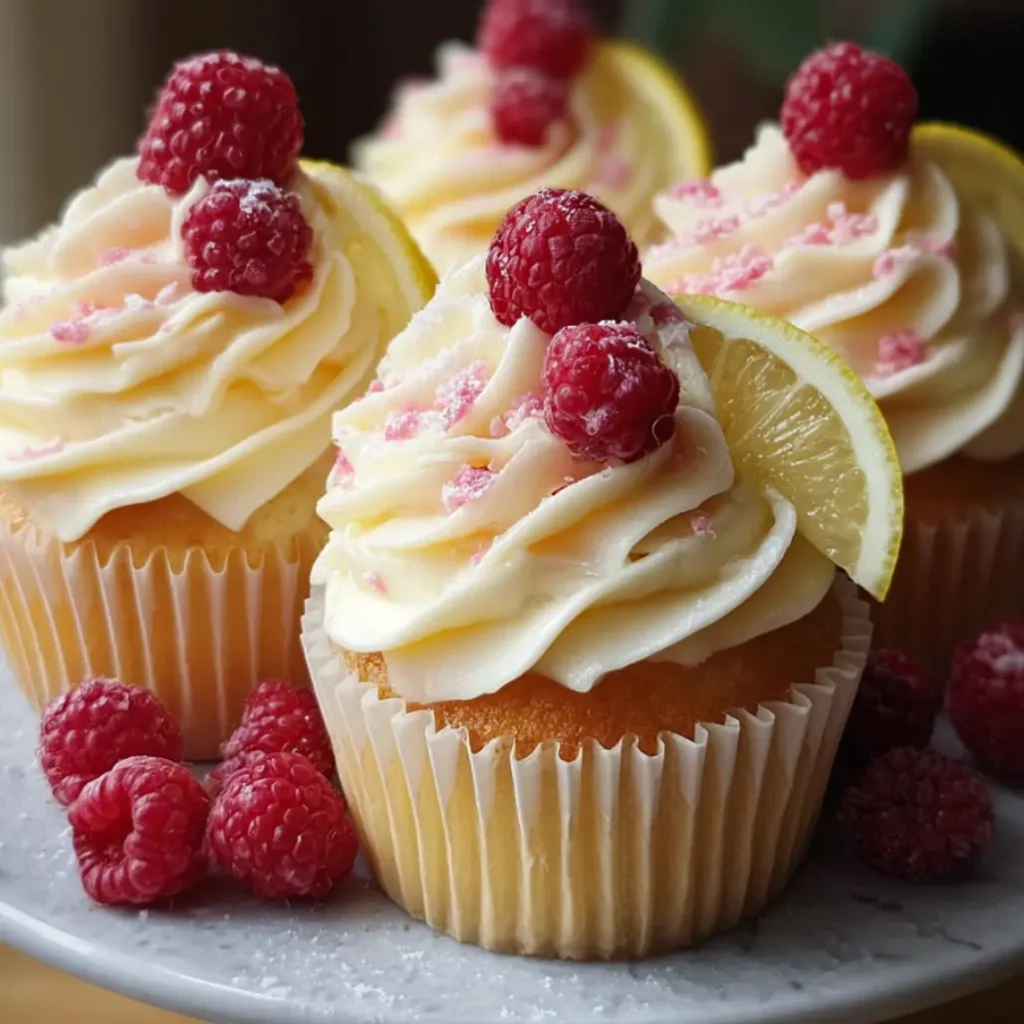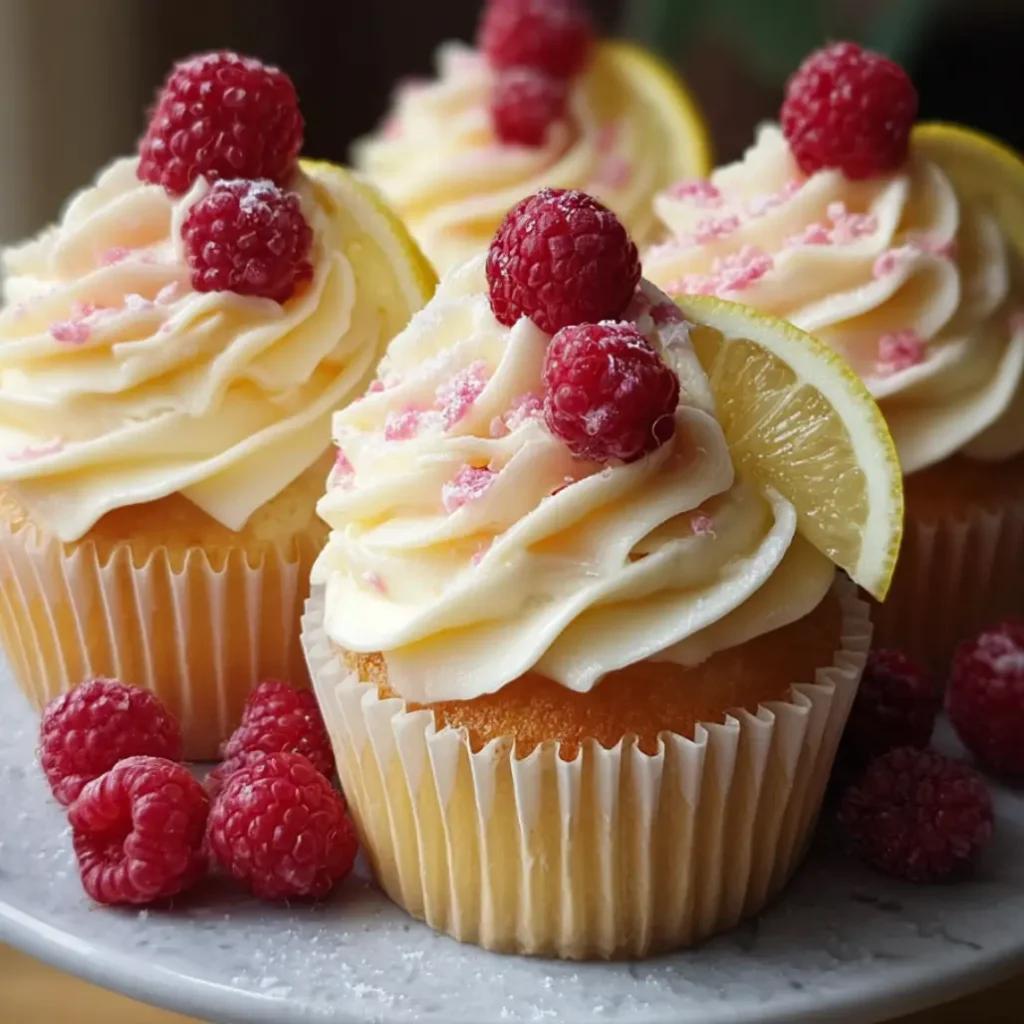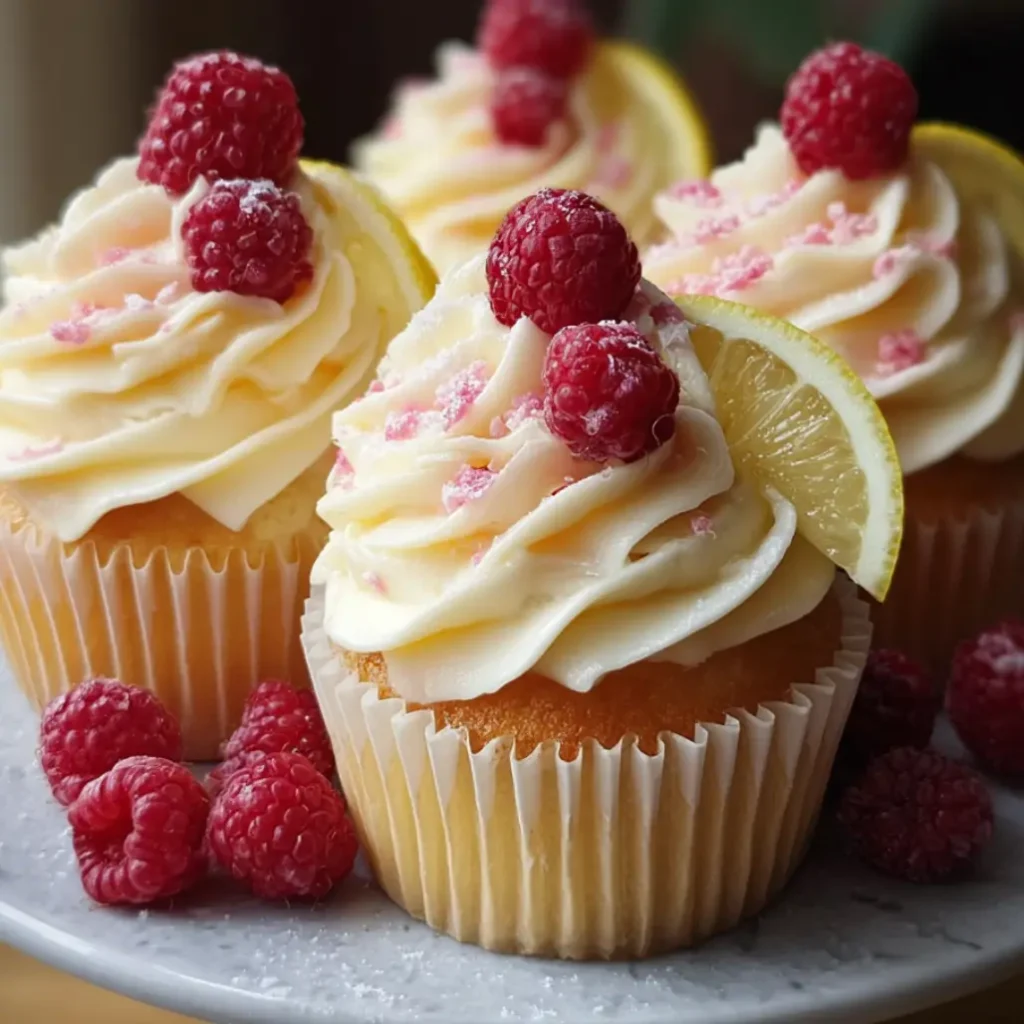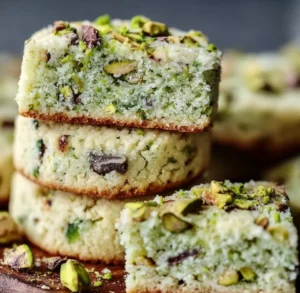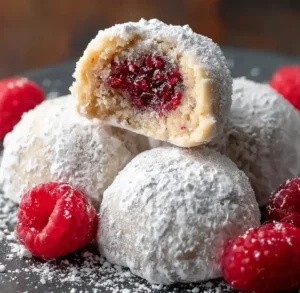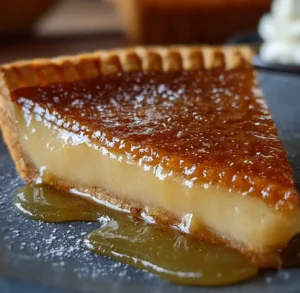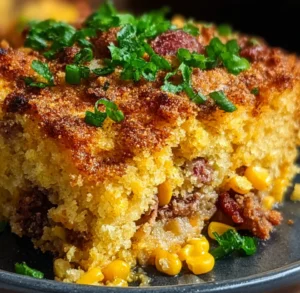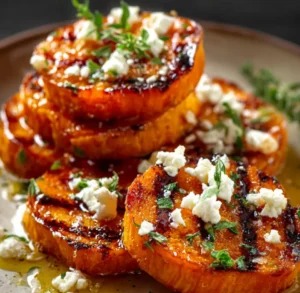| Prep Time: | 20 minutes |
|---|---|
| Cook Time: | 18 minutes |
| Total Time: | 38 minutes |
| Serves: | 12 |
There’s something absolutely magical about the way lemon raspberry cupcakes fill your kitchen with that perfect balance of citrusy brightness and berry sweetness, creating an irresistible aroma that draws everyone to the counter before the first batch has even cooled. These delightful treats represent the perfect marriage of tangy lemon and juicy raspberries, because when you combine the zesty boldness of fresh lemon with the gentle sweetness of plump berries, you create a flavor profile that’s both sophisticated enough for elegant gatherings and approachable enough for casual afternoon treats.
The beauty of lemon raspberry cupcakes lies in their ability to capture the essence of spring and summer in every single bite, because the natural acidity from the lemon perfectly balances the natural sugars in the raspberries, creating a harmonious flavor experience that never feels overly sweet or cloying. Each cupcake delivers a tender, moist crumb that practically melts on your tongue, because the careful balance of wet and dry ingredients creates that perfect texture that makes these treats so memorable and satisfying.
Why Lemon Raspberry Cupcakes Create the Perfect Flavor Symphony
Understanding why lemon raspberry cupcakes work so brilliantly together requires appreciating the science of complementary flavors, because citrus acids naturally enhance berry flavors while the natural sugars in raspberries temper the sharpness of lemon juice. This combination creates what pastry chefs call flavor layering, where each component enhances the other rather than competing for attention, because the bright acidity of lemon zest awakens your taste buds while the gentle sweetness of raspberries provides a satisfying finish.
The textural contrast also plays a crucial role in making these cupcakes so appealing, because the tender cake crumb provides a perfect canvas for the slight pop of fresh raspberries and the aromatic oils from lemon zest. When you bite into a properly made lemon raspberry cupcake, you experience multiple sensations simultaneously, because your palate encounters the soft cake, the burst of berry juices, and the lingering citrus oils that continue to develop flavor even after swallowing.
Temperature also affects how these flavors interact, because serving lemon raspberry cupcakes at room temperature allows all the flavor compounds to reach their optimal expression level. The essential oils in lemon zest become more pronounced when not chilled, while raspberry flavors develop more complexity when they’re not masked by cold temperatures, because warmth naturally enhances the volatile compounds that create these distinctive tastes.
Essential Ingredients for Perfect Lemon Raspberry Cupcakes
All-purpose flour forms the foundation of your cupcake structure, providing the protein network that creates the tender crumb, because the moderate protein content in all-purpose flour gives enough structure without creating tough, chewy results.
Fresh lemons contribute both juice and zest, with the zest containing the essential oils that provide the most intense lemon flavor, because the oils in the peel are more concentrated and aromatic than those found in the juice alone.
Fresh raspberries deliver bursts of natural sweetness and tartness, along with beautiful color contrast, because their delicate structure breaks down slightly during baking to release their juices throughout the cupcake.
Unsalted butter creates richness and helps achieve the proper cake texture, because butter contains water that turns to steam during baking, creating lift and tenderness in the final product.
Large eggs at room temperature provide structure and moisture, emulsifying the fats and liquids together, because room temperature eggs incorporate more easily into batter and create better volume when beaten.
Granulated sugar not only sweetens but also helps create the tender crumb by interfering with gluten formation, because sugar molecules coat flour proteins and prevent them from forming tough networks.
Baking powder serves as the primary leavening agent, creating the carbon dioxide bubbles that make cupcakes rise, because this double-acting leavener works both when mixed with liquids and when heated in the oven.
Buttermilk adds tanginess that complements the lemon while also reacting with the baking powder to create additional lift, because the acid in buttermilk activates the leavening agents more effectively than regular milk.
Pure vanilla extract enhances all the other flavors without overpowering them, because vanilla contains compounds that naturally amplify fruit and citrus flavors.
Salt balances the sweetness and enhances all other flavors, because even small amounts of salt make sweet flavors more pronounced and complex.
The Art of Creating Perfect Lemon Raspberry Cupcakes
Mastering lemon raspberry cupcakes begins with understanding that baking is both an art and a science, because successful results depend on precise measurements, proper technique, and attention to timing. The process starts with preparing your ingredients properly, because room temperature ingredients blend more easily and create better texture than cold ingredients that resist incorporation.
Creating the perfect batter requires patience and restraint, because overmixing develops gluten and creates tough, dense cupcakes instead of the light, tender results you want. The key lies in mixing just until ingredients are combined, because stopping as soon as you can no longer see flour streaks ensures the most delicate crumb structure.
Folding in the raspberries requires a gentle hand, because aggressive mixing breaks the berries and creates streaky, uneven color distribution throughout your cupcakes. Tossing the berries in a light coating of flour before folding them in prevents them from sinking to the bottom during baking, because the flour coating helps suspend them evenly throughout the batter.
Step-by-Step Instructions for Lemon Raspberry Cupcakes
Begin by preheating your oven to 350 degrees Fahrenheit and lining a standard twelve-cup muffin tin with paper liners, because proper preparation ensures even baking and easy removal of your finished cupcakes.
Professional Tip: Always use paper liners rather than just greasing the pan, because the liners prevent sticking and make your cupcakes easier to serve and store.
Key Points: Proper oven temperature is crucial for achieving the right rise and texture, because too high heat causes the outside to set before the inside cooks through, while too low heat prevents proper rising.
Cream together softened butter and granulated sugar in a large mixing bowl using an electric mixer on medium speed for three to four minutes, because this process incorporates air and creates the foundation for light, fluffy cupcakes.
Professional Tip: The butter and sugar mixture should become noticeably lighter in color and increase in volume, because proper creaming incorporates air bubbles that create lift during baking.
Key Points: Room temperature butter creams more easily and incorporates more air than cold butter, because cold butter resists blending and creates dense results.
Add eggs one at a time, mixing well after each addition, then incorporate vanilla extract and freshly grated lemon zest, because gradual addition prevents the mixture from curdling and ensures smooth incorporation.
Professional Tip: If your mixture appears slightly curdled after adding eggs, continue mixing until it smooths out, because the flour addition will bring everything together.
Key Points: Fresh lemon zest provides more intense flavor than dried zest, because the oils in fresh zest are more volatile and aromatic.
Combine flour, baking powder, and salt in a separate bowl, whisking thoroughly to ensure even distribution, because proper mixing of dry ingredients prevents pockets of leavening agent that could cause uneven rising.
Professional Tip: Sifting dry ingredients together creates an even lighter texture, because sifting incorporates air and breaks up any lumps in the flour.
Key Points: Measuring flour correctly by spooning it into measuring cups rather than scooping directly prevents dense, heavy cupcakes, because scooping packs the flour and adds too much.
Alternate adding the flour mixture and buttermilk to the creamed butter mixture, beginning and ending with flour, because this method prevents overmixing while ensuring thorough incorporation.
Professional Tip: Mix only until you can no longer see flour streaks, because overmixing at this stage develops gluten and creates tough cupcakes.
Key Points: The alternating method keeps the batter from becoming too thick or too thin at any point, because it maintains the proper consistency throughout mixing.
Gently fold in fresh raspberries that have been lightly tossed with flour, using a rubber spatula to minimize berry breakage, because broken berries can create uneven coloring and texture in your finished cupcakes.
Professional Tip: Frozen raspberries can be substituted but should be used while still frozen to prevent excessive juice release, because thawed berries release too much liquid and can make batter soggy.
Key Points: The flour coating on raspberries helps them stay suspended in the batter rather than sinking to the bottom during baking, because the coating increases their ability to float in the mixture.
Divide batter evenly among prepared cupcake liners, filling each about two-thirds full, because this amount allows room for rising without overflowing the cups.
Professional Tip: Use an ice cream scoop or large spoon to ensure consistent portion sizes, because even distribution creates uniform baking and professional-looking results.
Key Points: Avoid overfilling cups, because excess batter causes mushroom-shaped tops and uneven baking throughout the batch.
Bake for sixteen to eighteen minutes, or until a toothpick inserted in the center comes out with just a few moist crumbs attached, because slight moisture ensures tender results rather than dry, overcooked cupcakes.
Professional Tip: Start checking for doneness at fifteen minutes, because oven temperatures vary and overcooked cupcakes become dry and crumbly.
Key Points: The tops should spring back lightly when touched, and the cupcakes should just begin to pull away from the sides of the liners when properly baked.
Cool cupcakes in the pan for five minutes before transferring to a wire rack, because this brief cooling period prevents breaking while allowing them to release easily from the pan.
Professional Tip: Complete cooling on wire racks prevents soggy bottoms, because air circulation keeps the cupcakes from steaming in their own heat.
Key Points: Never frost warm cupcakes, because the heat will melt frosting and create messy, unappealing results.
Professional Tips for Lemon Raspberry Cupcake Success
Room temperature ingredients blend more easily and create better texture, because cold ingredients resist incorporation and can cause curdling or uneven mixing. Take eggs, butter, and buttermilk out of the refrigerator at least one hour before baking, because this timing allows them to reach optimal temperature for mixing.
Fresh lemon zest provides more intense flavor than bottled lemon juice alone, because the essential oils in the peel contain the most concentrated citrus compounds. Use a microplane grater to create fine zest that distributes evenly throughout the batter, because large pieces can create bitter pockets of flavor.
Quality paper liners make removal easier and create more professional presentation, because cheap liners often stick to cupcakes and tear during removal. Look for grease-resistant liners that maintain their shape during baking, because thin liners can collapse or become soggy from batter moisture.
Creative Variations for Lemon Raspberry Cupcakes
Transform these cupcakes into lemon blueberry versions by substituting fresh blueberries for raspberries, because blueberries provide similar tartness with a slightly different flavor profile. The baking time and technique remain the same, because blueberries have similar moisture content and size to raspberries.
Create meyer lemon raspberry cupcakes using meyer lemon juice and zest, because meyer lemons offer a sweeter, more floral citrus note that pairs beautifully with raspberries. You might want to reduce the sugar slightly, because meyer lemons are naturally sweeter than regular lemons.
Add poppy seeds for lemon raspberry poppy seed cupcakes, incorporating two tablespoons of poppy seeds with the dry ingredients, because the seeds add subtle nutty flavor and interesting texture contrast. The poppy seeds also create beautiful visual appeal, because they distribute throughout the batter as small dark specks.
Develop a gluten-free version using almond flour combined with gluten-free flour blend, because almond flour complements both lemon and raspberry flavors while providing excellent texture. You may need to adjust liquid ratios slightly, because alternative flours absorb moisture differently than wheat flour.
Perfect Pairing Ideas for Lemon Raspberry Cupcakes
Serve these cupcakes alongside refreshing beverages like iced tea or sparkling lemonade, because the bright flavors complement citrusy drinks beautifully. The combination creates a cohesive flavor experience, because similar flavor profiles enhance rather than compete with each other.
Pair with light breakfast favorites for brunch gatherings, because the fruity sweetness works well with coffee and mimosas. These cupcakes bridge the gap between breakfast pastries and dessert, because they’re sweet enough to satisfy dessert cravings while light enough for morning consumption.
Create an elegant afternoon tea service by offering these cupcakes with savory sides like cucumber sandwiches and cheese plates, because the sweet and tart flavors provide perfect contrast to savory elements. The combination follows traditional tea service principles, because alternating sweet and savory creates balanced palate cleansing.
Complement dinner party dessert tables with these cupcakes alongside other dessert recipes for variety, because offering multiple dessert options lets guests choose their preferred level of sweetness. The individual serving size makes them perfect for buffet-style entertaining, because guests can easily take what they want without cutting or serving utensils.
Discover More Delicious Recipe Categories
Explore complementary recipes in snacks and appetizers that work well before serving these cupcakes, because light appetizers prepare the palate for sweet treats without overwhelming it. Consider savory options that won’t compete with the delicate fruit flavors, because heavy or strongly flavored appetizers can dull sensitivity to subtle citrus and berry notes.
Browse through perfect sides that complement dessert offerings, because well-chosen side dishes can enhance the overall dining experience. Fresh fruit salads or light salads provide palate cleansing between courses, because acidic components in salads reset taste buds for optimal dessert appreciation.
Consider flavored dips and marinades for creating themed party menus, because cohesive flavor profiles throughout a meal create memorable dining experiences. Citrus-based dips or berry-flavored sauces tie menu elements together, because repeated flavor notes create sophisticated menu planning.
Storage Guidelines for Lemon Raspberry Cupcakes
Store unfrosted cupcakes at room temperature in an airtight container for up to three days, because exposure to air causes them to become stale and lose their tender texture. Place parchment paper between layers if stacking, because this prevents them from sticking together or getting compressed.
Frosted cupcakes require refrigeration due to dairy-based frostings, because buttercream and cream cheese frostings can spoil at room temperature. Allow refrigerated cupcakes to come to room temperature for fifteen minutes before serving, because this timing allows flavors to fully develop and frosting to soften to optimal texture.
Freeze unfrosted cupcakes for up to three months by wrapping them individually in plastic wrap and storing in freezer bags, because proper wrapping prevents freezer burn and maintains quality. Thaw frozen cupcakes at room temperature for two hours, because gradual thawing prevents condensation that could make them soggy.
For optimal freshness, add fresh raspberry garnishes just before serving, because berries become soft and release juices when stored on frosted cupcakes. This timing ensures the most attractive presentation, because fresh berries maintain their shape and vibrant color when added at the last moment.
The Science Behind Perfect Lemon Raspberry Cupcakes
Understanding the chemical reactions in cupcake baking helps achieve consistent results, because baking involves multiple simultaneous processes that must be balanced carefully. The leavening agents create carbon dioxide gas that forms bubbles in the batter, because these bubbles expand when heated and create the light, airy texture we desire in cupcakes.
Protein coagulation from eggs and flour creates the structural framework that holds the cupcake together, because heat causes protein molecules to unfold and form networks that trap gas bubbles. This process begins around 140 degrees Fahrenheit and continues throughout baking, because gradual protein setting allows maximum rise before the structure becomes fixed.
The Maillard reaction between proteins and sugars creates the golden color and complex flavors in the cupcake exterior, because this browning reaction develops hundreds of flavor compounds that add depth and richness. This reaction accelerates above 280 degrees Fahrenheit, because higher temperatures promote faster browning and more intense flavor development.
Moisture management affects both texture and keeping quality, because proper hydration creates tender crumbs while excess moisture can cause soggy results. The balance of wet and dry ingredients must be precise, because too much liquid creates dense, gummy texture while too little produces dry, crumbly cupcakes.
Troubleshooting Common Lemon Raspberry Cupcake Problems
Dense, heavy cupcakes usually result from overmixing the batter or using too much flour, because both issues develop excess gluten that creates tough texture. Mix ingredients only until just combined, because additional mixing after flour addition develops gluten strands that make cupcakes chewy rather than tender.
Sunken centers often indicate underbaking or opening the oven door too early, because the structure hasn’t set enough to maintain its shape. Avoid opening the oven door during the first fifteen minutes of baking, because temperature drops can cause the delicate structure to collapse before proteins set.
Dry, crumbly cupcakes suggest overbaking or insufficient fat content, because extended heat exposure removes too much moisture while inadequate fat fails to provide proper tenderness. Check for doneness at the minimum baking time, because residual heat continues cooking even after removal from the oven.
Berries sinking to the bottom happens when they’re not properly coated with flour or when the batter is too thin, because the coating helps suspend fruit pieces throughout the mixture. Toss berries with a tablespoon of flour before folding them in, because this coating increases their buoyancy in the batter.
Uneven browning across the batch indicates hot spots in your oven or improper pan positioning, because heat distribution affects how evenly cupcakes bake. Rotate the pan halfway through baking if you notice uneven coloring, because this adjustment compensates for oven hot spots and ensures uniform results.
Additional Inspiration for Lemon Raspberry Cupcake Variations
Consider developing seasonal variations using different berry combinations, because mixed berry versions offer complex flavor profiles while maintaining the basic cupcake structure. Strawberry lemon cupcakes work particularly well in spring, because strawberries pair naturally with citrus flavors and provide similar acidity balance to raspberries.
Experiment with different citrus fruits like lime or orange, because each citrus type brings unique flavor characteristics while maintaining the bright, acidic balance that makes these cupcakes so appealing. Orange raspberry cupcakes offer a sweeter citrus note, because orange juice and zest provide less acidity than lemon while still complementing berry flavors beautifully.
Explore sophisticated flavor additions like lavender or thyme, because herbs can elevate simple fruit combinations into gourmet experiences. Lemon thyme raspberry cupcakes offer an elegant twist, because the herbal notes complement both citrus and berry flavors without overwhelming their natural brightness.
Create layered flavor experiences by incorporating fruit purees into the frosting, because this technique intensifies fruit flavors while creating beautiful color variations. Raspberry buttercream or lemon cream cheese frosting amplifies the cupcake flavors, because concentrated fruit flavors in the frosting echo and enhance the more subtle fruit notes in the cake itself.
Conclusion
Lemon raspberry cupcakes represent the perfect balance of bright citrus and sweet berry flavors, creating treats that satisfy both simple cravings and sophisticated palates, because their complex flavor profile develops from the interaction between acidic and sweet components that complement rather than compete with each other. These delightful cupcakes showcase how traditional baking techniques can create extraordinary results when applied with attention to detail and understanding of ingredient interactions, because successful baking relies on both technical precision and creative inspiration working together harmoniously.
The journey of creating perfect lemon raspberry cupcakes teaches valuable lessons about patience, technique, and the importance of quality ingredients, because each element contributes to the final result in ways that become apparent only when everything comes together in the finished product. Whether you’re baking for special occasions or simply treating yourself to homemade goodness, these cupcakes deliver satisfaction that store-bought alternatives simply cannot match, because the fresh ingredients and careful preparation create flavors and textures that represent the very best of home baking traditions.

